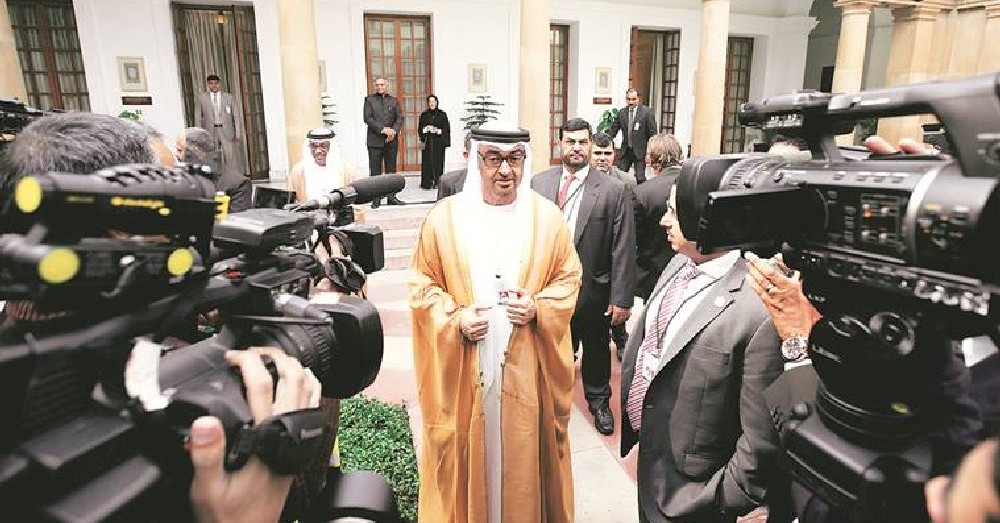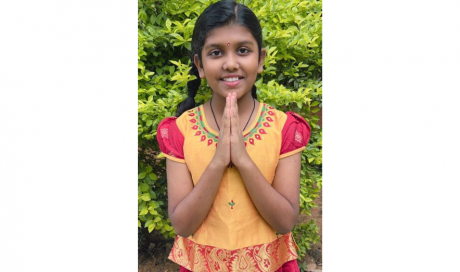Eight months after India tested a nuclear device in May 1974, bringing international condemnation upon itself, it received support from an unexpected quarter. In a joint communique issued during the five-day state visit of President Sheikh Zayed bin Sultan al Nahyan, India and the United Arab Emirates stressed “the need to develop nuclear energy extensively in all countries”.
“The visit signified the development of an uncommon sympathetic mutuality and intimacy between the two countries,” Ajay N Jha of JNU’s Centre for Studies in Diplomacy wrote in the edited volume, West Asia and India’s Foreign Policy (Deep & Deep Publications, 1992). Sheikh Zayed’s support came at a time when Pakistan had criticised the tests vociferously, and the Nuclear Suppliers Group had been created in opposition to India’s the Indian tests.
Forty-two years later, Sheikh Mohammed bin Zayed Al Nahyan, son of the UAE’s founding President and the Crown Prince of Abu Dhabi, will be the Chief Guest at the 68th Republic Day celebrations, in what is being seen as complete reset of India’s relationship with the Gulf.
Over the last four-and-a-half decades, India has figured out that its relationship with the UAE rests on four pillars — trade and commerce, energy security, security and defence, and welfare of its expat community. The trajectory of the relationship, meanwhile, has traversed both the crests of hope and troughs of lost time and opportunities.
Between 1976 and 1980, when Vice-President Hamid Ansari was India’s ambassador to the UAE, President Fakhruddin Ali Ahmed visited in 1976, and External Affairs Minister Atal Bihari Vajpayee during the Janata regime. The high point was the visit by Prime Minister Indira Gandhi in 1981 when, then Indian ambassador Lalit Mansingh recalls, she was greeted by crowds larger than those that would ordinarily turn up for the UAE’s own leaders. Part of the reason was that the Indian community was about 4.5 lakh strong, whereas locals were just about 2.5 lakh.
Indira’s visit generated a lot of interest in the UAE. She offered attractive terms for investments in India — 26% to 40% equity shares for joint ventures — to local businessmen flush with petrodollars. The Prime Minister was allowed to lay the foundation stone for a mosque being built by the Indian community on a plot of land donated by the UAE royals. “It was a significant gesture for them to allow a woman to lay the foundation stone of a mosque,” Mansingh, who was ambassador between 1980 and 1983, said.
Indians were seen as a disciplined and hardworking community in the UAE, Mansingh said. “In fact, one of the rulers of Sharjah, Sheikh Sultan, had been raised by a nanny from Kerala, and he could speak some Malyalam. He was one of the most pro-India leaders in the UAE, and Indira met him as well.”
India’s relations with the UAE could not, however, match up to its promise. After 1981, Indians continued to travel to work and live there, and India imported oil, but New Delhi lagged in implementing initiatives to attract investments. During the same years, Pakistan invested great diplomatic effort in Gulf countries, including the UAE. Beginnings made by Prime Minister Zulfiqar Ali Bhutto were taken forward by General Zia-ul Haq, even as India stayed away.
The UAE was among the most vocal of Gulf countries with its concerns when the Babri Masjid was demolished in 1992 — which led to the postponement of a visit by then Minister of State (External Affairs) R L Bhatia, and put into the freezer a possible visit by Prime Minister P V Narasimha Rao. In his book India’s Foreign Policy in the 21st Century, West Asia Studies professor at JNU, Prof A K Pasha, wrote that the Gulf Cooperation Council Summit in Abu Dhabi in December 1992 called the demolition a “sacrilege and unpardonable act”, and even “moderate GCC members like the UAE had to fall in line” since no Muslim country wanted to be seen as going against Muslims.
Around this time, the Organisation of Islamic Cooperation (OIC, then the Organisation of the Islamic Conference) started issuing declarations on Kashmir, and the UAE became party to them. New Delhi was upset.
In 1999, when the hijackers of IC-814 took the plane to Dubai, India leaned on the UAE through the US to negotiate for the release of the hostages. “The authorities at Dubai managed to persuade the hijackers to release 27 of the 180-odd passengers,” former Foreign Secretary J N Dixit wrote in his book, India-Pakistan in War and Peace, adding that the UAE authorities perhaps did not want to get involved in complex negotiations.
Many feel that it was after this episode that India decided to take the UAE relationship seriously. It wanted to step up security cooperation, especially in the light of reports that Dawood Ibrahim and some of his henchmen had fled to the UAE after the 1993 Bombay attacks. Home Minister L K Advani visited in 2001, but the pace of cooperation remained slow due to Pakistan’s influence on the UAE.
Trade ties did better than those of politics — despite some challenges that Etisalat and Emaar faced in dealings with the Indian government. In fact, one of the key reasons why Prime Minister Manmohan Singh’s visit could not take place in 2013 were issues pertaining to these big investors.
Even so, bilateral trade, valued at $ 180 million per annum in the 1970s, is today around $ 50 billion, making UAE India’s third largest trading partner for 2015-16 after China and the US. The UAE is India’s second largest export destination, with exports of over $ 30 billion in 2015-16. For the UAE, India was the biggest trade partner in 2015 — over $ 28 billion in non-oil trade.
As of March 2016, the estimated investment of the UAE in India is $ 8 billion — around $ 4.03 billion is Foreign Direct Investment, the rest is portfolio investment. The UAE is the tenth biggest investor in India in terms of FDI.
This is the background of India’s outreach to the UAE — beginning with Prime Minister Narendra Modi’s visit in August 2015, followed by Crown Prince Sheikh Mohammed bin Zayed Al Nahyan’s state visit in February 2016, and now his presence at the Republic Day parade. For the first time, India has laid out the Republic Day red carpet for a leader who is neither a Head of State nor Head of Government. But MBZ, as the Crown Prince is popularly known, is the next generation of the UAE’s leadership, and its future leader — as an Indian diplomat explained, “We are betting on the future… MBZ is a highly popular leader not just in the Emirates, but in the Gulf as a whole.”
In interactions with Indian interlocutors, MBZ has been extremely supportive of India’s concerns on terrorism, and that has been reflected in joint communiques of August 2015 and February 2016, and in the increased cooperation between the security agencies.
Both sides will be fleshing out the comprehensive strategic partnership agreement, a defence cooperation pact and a mouth-watering $ 75 billion investment fund for India’s infrastructure (when it is finally signed) in the coming months. It remains to be seen whether India can take advantage of these opportunities.
An Indian diplomat in the UAE summed up the state of play: “Many Arabs from the UAE used to visit Bombay during the Raj; it was like Paris to them. They were particularly enamoured with the rains, since they came from the desert. They have stopped coming in the last few decades. Will they return? The Crown Prince’s visit is about building India’s brand again.”
Share This Post














